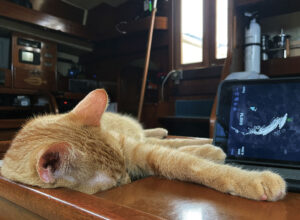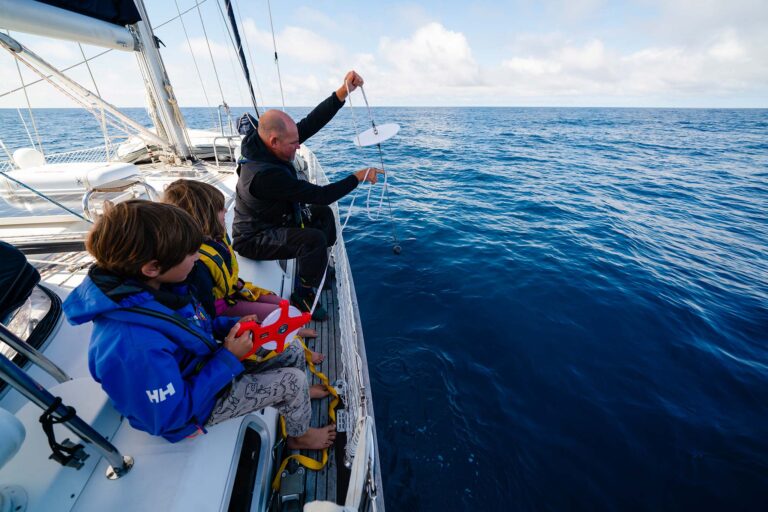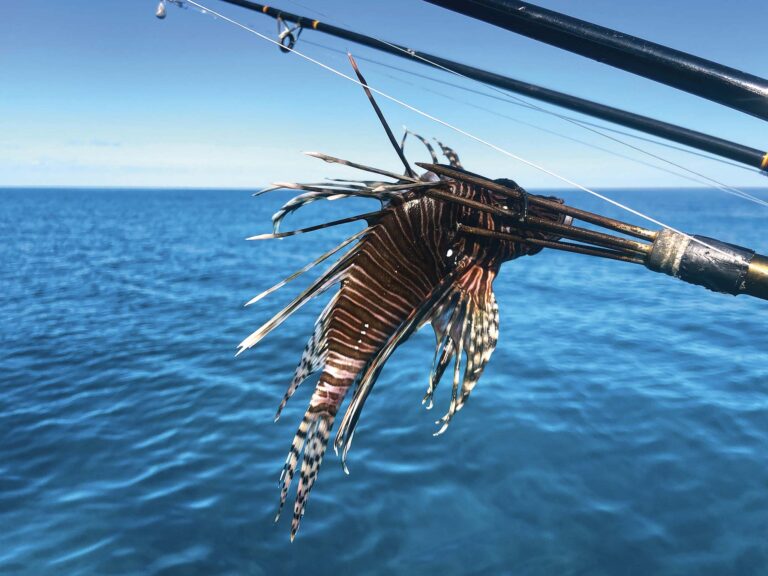Think your boat is ready to launch? It’s all too easy to overlook things during the rush of spring. Use this checklist to jog your memory.
To download and print the story for reference, scroll all the way to the bottom.
1) Engine & Running Gear
How long has it been since you changed your impeller? It’s inexpensive insurance. Install a new one and keep the one you removed as a spare.
Drive belts: change these at least every other year. They do wear and become harder to tension. They should deflect no more than half an inch when pushed with a finger. Keep the one you’ve just swapped out as a spare.
Change your primary and secondary fuel filter elements as a matter of course. Chances are there is still life left in them, but that’s not a chance you want to take. Again, it’s cheap insurance.
Grab hold of the propeller and push it from side to side. There should be little, if any, movement. If there is, you may well have a problem with your P-bracket or cutless bearing. While you’re there, give your prop a good cleaning and get it nice and shiny as you’re pondering what kind of fouling prevention, if any, you’re going to apply. It also gives you a good chance to check your prop for impact damage or dezincification.
How long has it been since you checked and/or greased your prop shaft’s stuffing box? Over time, the packing material gets compressed and hardens, and the lubricating grease wears off. If you can’t remember the last time you checked it, it’s time…
Check your zincs. Those on your prop shaft will certainly need to be replaced. If you have a saildrive, check the pencil zinc in the drive leg, and if it is more than half eroded, replace it. Raw-water cooled diesels will have one or more pencil anodes situated in inconvenient locations around the block; these too must be checked and probably replaced. Some freshwater-cooled diesels also have zincs in their heat exchangers.
Check the oil in your engine and transmission. If it is so old and dark that you cannot see the dipstick through it, it’s time for a change. If it is milky, then there is water in it, which is a whole different—and probably expensive—problem. You can’t change the oil in a saildrive leg when the boat is in the water, so this is one job you should do every couple of years before launching. Add some biocide to the fuel tank. Diesel “bugs” thrive on water, which can condense even in a full tank.
2) Batteries & Electrics
If you’ve left your batteries on board over winter, check electrolyte levels and top up as necessary, then hook them up to a trickle charger.
Inspect all terminals for signs of corrosion. Grease the posts and clamps with Vaseline. If your terminals still have wingnuts, take this opportunity to replace them with nylocs or nuts with lock washers—they are much more secure.
While your batteries are being charged, power up all your instruments, turn on the backlighting in the displays and leave them on for a few hours to get rid of any condensation
Open your distribution panel and inspect the connections by wiggling the wires where they enter the terminals. If any connections are bad, better to know now than find out on the water.
Remove the speed log transducer, push out the pin that holds the paddlewheel in place, and clean off the remnants of the fouling that accumulated on it the previous season, Paint it with transducer antifouling—it won’t work for long, but it’s a start! Don’t forget to orient the paddlewheel correctly when you’re replacing it.
If your mast has been out for the winter, check that all the electrical cables and VHF antenna have been reconnected correctly. Don’t trust the boatyard rigger to have done this.
Stick your head inside the anchor locker and check out the electrical connections on the windlass motor. It is very common to find corrosion on these. Disassemble, clean and reassemble with a coating of Vaseline or other dielectric grease. If the windlass has foot switches, inspect their wiring connections too.
Finally, take a look at the DC ground connection to the engine block. This is a prime source of electrical problems. Make sure the wire terminal is clean and secure, and smear it with Vaseline.
3) On Deck and Below Deck
Lower your anchor and lay out the rode for inspection. It’s better to find a damaged nylon rode now than when you least want to. This is a great time to re-apply markings on the chain and/or rope. Check that anchor shackles are securely moused with seizing wire—preferably monel—and that the bitter end of the rode is secured to the boat!
You service your winches every year, don’t you? Me neither. Doing it every second year seems to be adequate. It’s much better to service your winches while your boat is on the hard. That way, if anything falls overboard, you can usually find it. Clean the parts with mineral spirits or diesel (which you can later pour into the used engine oil container you’re taking to the recycling center) and do not use grease on the pawls and springs, just a few drops of engine oil.
Flush out the antifreeze in your water system with freshwater, then partially fill the tank, add a quarter cup of Chlorox, and run each faucet/foot pump in turn until the water coming out smells of bleach. Let stand two or three hours, then flush the system through again. This should kill any bacteria that have made their homes in the water system.
Carefully inspect each of your lifelines, paying particular attention to where the wire enters the terminals. This is where they are most likely to fail. Vinyl-coated stainless wire is particularly suspect, because the white coating often hides rampant rust. If vinyl-coated lifelines are more than a few years old, it would make sense to replace them.
Check that all your blocks spin freely. If they don’t, rinse them out with freshwater. You usually don’t need to lubricate.
Test your electric bilge pump and float switch by pouring a quart or so of water into the bilge sump.
Test your manual bilge pump too. Typically, these never get used, and the diaphragms can harden and crack.
Check all electrical connections to pumps and other important systems: this is what salt water does to them (Photo 5)
Look over your propane stove and make sure the delivery hose has not become chafed or kinked. Test the solenoid operation; light the stove to be sure all burners are working.
Pump a 50:50 solution of water and white vinegar through the heads and leave it overnight to clean mineral deposits on the inside of the bowl, pump and valves. Follow up with a healthy shot of washing-up liquid or baby oil to lubricate the pump.
Operate all seacocks to make sure they are free to turn (Photo 6). Cone-type seacocks can be easily disassembled and lubricated; to grease a ball valve, close it, then apply a dollop of waterproof grease from both inside and outside the boat. A slim paintbrush or stick with a glob of grease on its end is an ideal applicator; inside the boat, you’ll have to take off the relevant hose, apply the grease and reinstall the hose. Work the valve a few times to distribute the grease.
Check all hose clamps. Even so-called “marine” fittings can corrode.
Don’t forget your steering system. If it’s cable and quadrant, check that the chain is lubricated and that the cables are correctly tensioned—about 1in of deflection is right. Run a rag or folded-over piece of paper towel along the cable to check for meat hooks. Make sure the cotter pins are in place on the clevis pins securing the sheaves: these have a habit of working free (always fit the clevis pins with the flange uppermost, so they can’t drop out if the pin does come adrift). If it’s a rack and pinion system, give the grease points a shot of marine grease. Spin the wheel from side to side and listen and feel for any signs of binding or play in the system.
4) The Rig
Inspect each of your turnbuckles. It’s rare, but the barrels can crack. The studs, too, can suffer from crevice corrosion. Make sure that cotter pins are securely in place; bend back any protruding pin ends and tape over them.
Closely inspect the gooseneck and boomvang connections on the mast and boom for corrosion, small cracks, loose fasteners and any other signs of wear and tear.
Do the halyard sheaves turn freely? It can be hard to tell from the deck, but sheaves can and do slowly tighten up as salt and dirt get into them. Be prepared to go aloft when the boat is launched and check them out. A Teflon-based or other dry lubricant in a spray can with a long plastic nozzle will get them turning; for longer-term lubrication, you’ll have to remove the sheaves and apply a heavier grease that won’t be washed away in the first rainstorm. Note that some sheaves are self-lubricating and shouldn’t be greased.
Also check for cracking around the sheave boxes, shroud tangs, and where halyards exit the mast. These are signs of metal fatigue and could signal the beginning of the end for the spar.
Signs of discoloration or rust at the points where rigging wire enters terminals indicate that the wire may be nearing the end of its life. Another sign is “fishhooks” or broken strands. Check every toggle and make sure the cotter pins are secure.
Spring Commissioning ChecklistPDF
Photos courtesy of Peter Nielsen









